jehenry89
Aquarium Advice Freak
Hello everyone,
My boyfriend started a saltwater talk back in July (I believe) and has since been battling non-stop algae. He first started with brown algae, which I know is normal for new tanks, then it grew into some kind of hair algae, then slime started and now it has turned into what you see in the pictures below. He is about to tear this tank apart and give up completely and I really don't want to see that happen . I have my own two planted fresh water tanks which are both very successful. I have had my battles with algae but nothing like this where there are 7 different things growing at once. We are both kind of out of ideas on how to fix this and really don't know what else to do. Please any help you can offer would be appreciated.
. I have my own two planted fresh water tanks which are both very successful. I have had my battles with algae but nothing like this where there are 7 different things growing at once. We are both kind of out of ideas on how to fix this and really don't know what else to do. Please any help you can offer would be appreciated.
His specs are as follows: 50 gallon tank with 20 gallon sump, two 240watt TaoTronics LED light fixtures, automatic top off system, around 70lbs of rock (which he didn't buy live), Eshopps 75-100 gallon skimmer and two 1200 pumps. He also just added some cheato into the sump like a week ago. He also bought a phosphate reactor about a month ago and at first it seemed to be helping quiet a bit but then after about two weeks, it only seemed to make things worse.
Fish in the tank are two Picasso clown fish, one Cardinal fish, one Royal Grama and one Blenny (cant remember the specific type). There is also an assortment if snails and a cleaner shrimp in there as well.
He uses a 3 stage RODI unit to make water. MaxPureMPDI 90-GPD RODI System.
But he isn't really sure how to use it and the manual didn't come with any useful information. How do we actually operate it? Are we suppose to clean it after every use?
The light cycle is 8 hours and we do about 15% water changes weekly.
My boyfriend started a saltwater talk back in July (I believe) and has since been battling non-stop algae. He first started with brown algae, which I know is normal for new tanks, then it grew into some kind of hair algae, then slime started and now it has turned into what you see in the pictures below. He is about to tear this tank apart and give up completely and I really don't want to see that happen
His specs are as follows: 50 gallon tank with 20 gallon sump, two 240watt TaoTronics LED light fixtures, automatic top off system, around 70lbs of rock (which he didn't buy live), Eshopps 75-100 gallon skimmer and two 1200 pumps. He also just added some cheato into the sump like a week ago. He also bought a phosphate reactor about a month ago and at first it seemed to be helping quiet a bit but then after about two weeks, it only seemed to make things worse.
Fish in the tank are two Picasso clown fish, one Cardinal fish, one Royal Grama and one Blenny (cant remember the specific type). There is also an assortment if snails and a cleaner shrimp in there as well.
He uses a 3 stage RODI unit to make water. MaxPureMPDI 90-GPD RODI System.
But he isn't really sure how to use it and the manual didn't come with any useful information. How do we actually operate it? Are we suppose to clean it after every use?
The light cycle is 8 hours and we do about 15% water changes weekly.

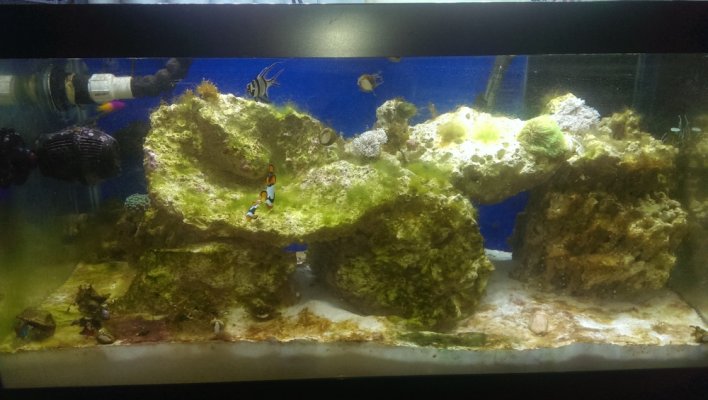
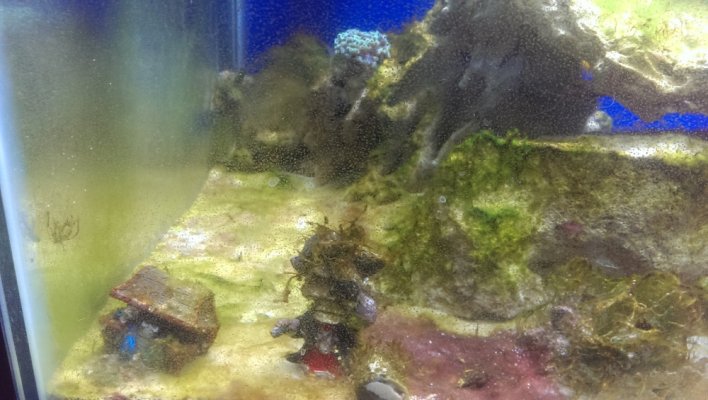
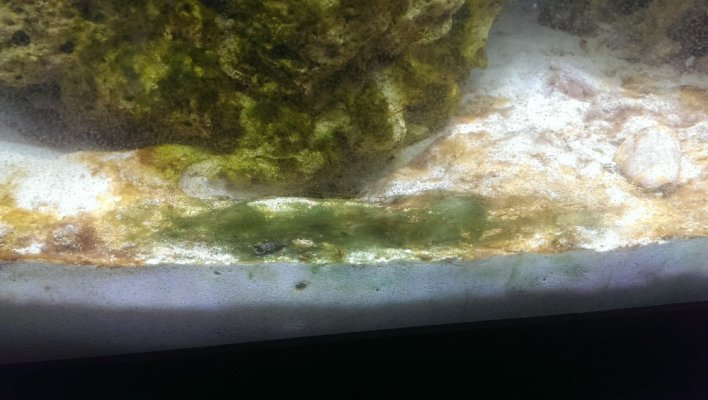
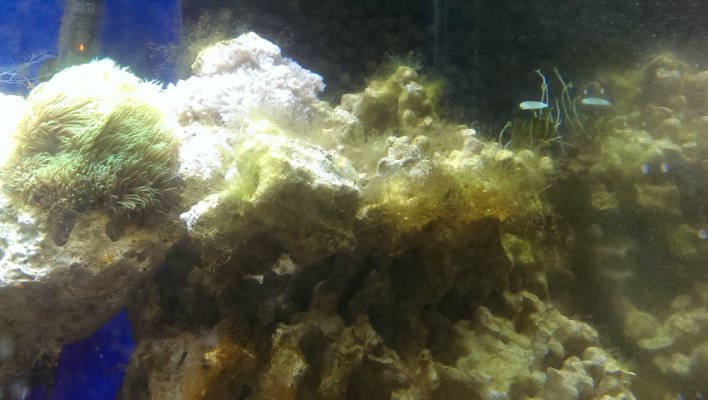
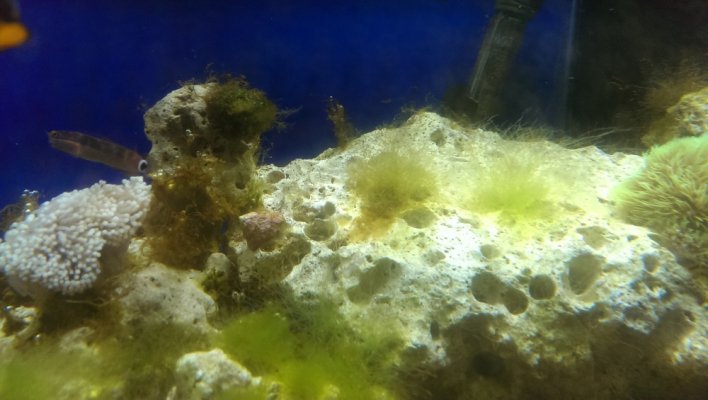
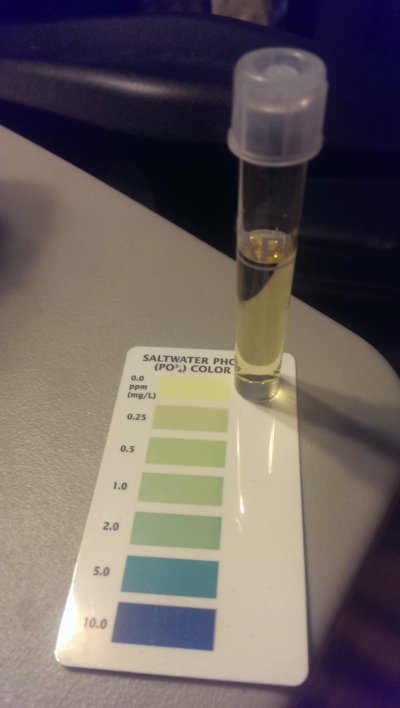
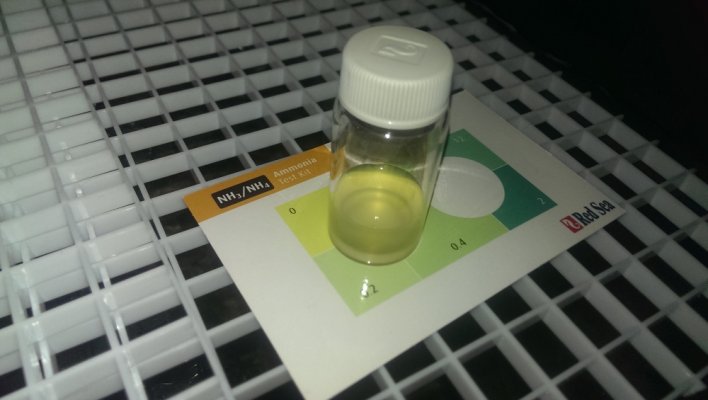
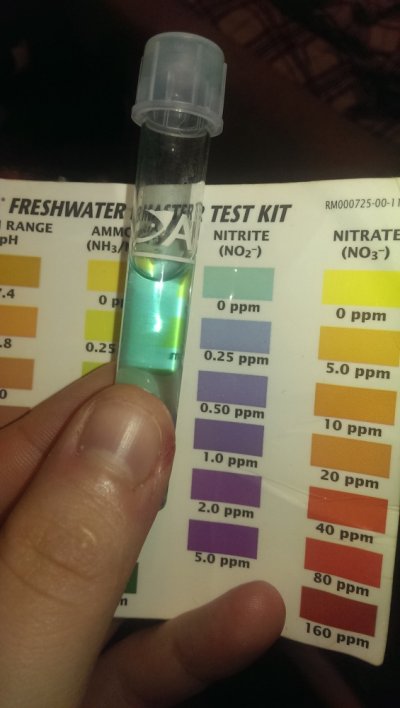
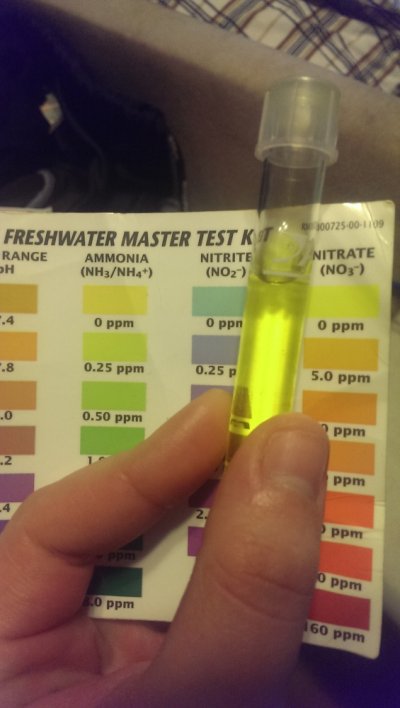
![IMAG0750[1].jpg](/data/attachments/220/220477-81bd4415caef5b7c6ca3822b6e55e352.jpg)
![IMAG0751[1].jpg](/data/attachments/220/220478-55352941ec4948ce43d0b59d4dfee35a.jpg)